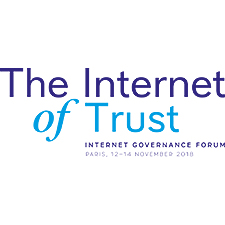I can’t use this app: Closing the web accessibility gap
13 Nov 2018 09:00h - 10:00h
Event report
[Read more session reports and live updates from the 13th Internet Governance Forum]
The workshop addressed the accessibility needs of persons with motor, vision and hearing impairments through their own experiences of using digital devices. Concrete recommendations were made for closing the accessibility gap, including the implementation of policies and specific training for ICT developers.
The workshop was moderated by Ms Gunela Astbrink, Australian IGF Ambassador, Women with Disabilities Australia, and Ms Datta Bishakha, Co-Founder and Executive Director of Point of View, who required the panellists to address the accessibility obstacles in the online environment.
Mr Gerry Ellis, Civil Society, Consultant at Feel the BenefIT, Western European and Others Group (WEOG), outlined the history of rights of persons with disabilities in the UN system. Until 1981, the World Health Organization (WHO) was the main group in charge of rights of persons with disabilities. One of the major outcomes of the Decade of Disabled Persons was the UN Standard Rules on the Equalization of Opportunities for Persons with Disabilities adopted by the General Assembly in 1993. This document was important because it started to settle the idea that persons with disabilities are not the problem, but the environment is. In 2001, the WHO launched the International Classification of Functioning, Disability and Health, reiterating that disabled people are functionally limited by their environment. The UN convention adopted in 2006 was a landmark for persons with disabilities because it made a distinction between impairment and disability, the former being related to a medical issue and the latter to how people interact with their environment. He concluded by saying that the distinction is fundamental for public policies.
Ms Nidhi Goyal, Civil Society, Founder of Rising Flame, Asia-Pacific Group, talked from the Global South’s point of view. 15% of the world population have some sort of disability, but there is no precise data of how much are in the south. However, according to Goyal, persons with disabilities live less independently in developing countries. Technology is deepening the divide between disabled and non-disabled persons, when it could actually reduce barriers to accessibility. Organisations, governments, and multiple stakeholders should have procurement policies and be committed to accessibility regardless of the number of disabled people they have, since it enables real inclusion.
Mr Shadi Abou-Zahra, Technical Community, Western European and Others Group (WEOG), works for W3C and gave a technical perspective on how devices are developed. Despite the increasing number of people completing their education in IT, programming, and web development, only a very few have ever encountered problems with disability or accessibility. The needs of persons with disabilities are under-represented in the sector. In addition, accessibility is not only for people with disability, but it can also benefit the majority of the population making applications more comfortable, like captions, large size policies, etc. W3C develop core standards for the web and web-based technologies. The most well known is the web content accessibility guidelines, which explain to content authors the requirements they need to ensure in the content to make it accessible for some disabled persons. He concluded by saying that companies have the tools to enhance accessibility and the lack of will is making the inclusion more difficult.
Mr Vashkar Bhattacharjee, Civil Society, Asia-Pacific Group, underlined that companies and governments have to ensure accessibility for the citizens with disabilities. He added that representation is also important to make progress on this issue. The Bangladesh Government does not have any web accessibility guidelines or standards. Bhattacharjee stressed that people with disabilities from the developing world also encounter difficulties in joining international forums, like the IGF, which undermines their representation.
Ms Gunela Astbrink, Australian IGF Ambassador, Director ISOC Australia, Women with Disabilities Australia, analysed the situation of people with disabilities in the Pacific Island Countries. Concerning ICT, the first barrier is the infrastructure and affordability to get people connected. In addition, there is a problem of understanding the needs of persons with disabilities regarding ICT. A pilot project was led by the International Telecommunication Union (ITU) in conjunction with the Pacific Disability Forum in Vanuatu to collect baseline data on how people with disabilities used ICT. Some 200 people were interviewed in towns and villages in a number of different islands. The findings were that many people had not heard of the Internet; many people did not have smartphones, and many had limited access to electricity. In addition, among 29 government websites consulted, none were accessible to some sort of disability. Astbrink concluded by saying that policies and regulations have to be implemented and that there is a need to train ICT developers to accommodate people with disabilities.
By Ana Maria Correa
Related topics
Related event

